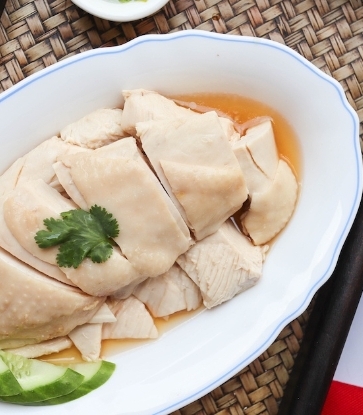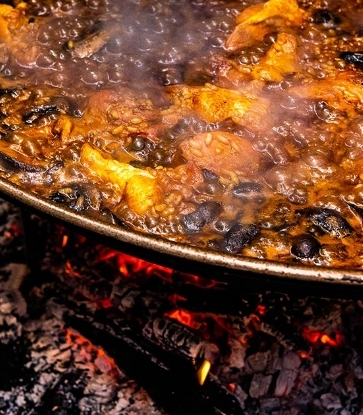
Tawaraya Rice supplies over 10 types of rice to Singapore’s top Japanese restaurants, each carefully selected by Sato himself. He also takes direct orders from customers who want to buy rice that is polished-upon-order. Here, he dishes out tips and techniques for cooking Japanese short-grain rice the right way.
Dear Sato-san,
How can I make the short-grain rice I cook at home taste as fluffy and delicious as that you get at Japanese restaurants?
In Japanese cuisine, rice is a main component and gives authenticity to the food. Cooking rice is not as straightforward as dumping rice and water into a rice cooker and letting it cook on automated mode. There are things to look out for even before you actually cook the rice.
Quality And Freshness Of The Rice
There are four things to look out for in a good-quality rice: First, it should look shiny and white in appearance. Next, good rice has a distinct fragrance that is milky and grain-like. Third is the taste and, finally, we look at the texture of the rice. Different varieties of rice work for different dishes. For example, Nanatsuboshi rice from Hokkaido is light tasting and its sticky texture makes it best for making sushi and onigiri. On the other hand, Yumepirika from the same region has a fuller flavour and is as white as snow and is best eaten as a white rice on its own.
Rice should be eaten as soon as it is polished because it starts to lose its aroma once it is polished. Uncooked, freshly polished rice should be stored in an airtight container and kept in the refrigerator, not the pantry, to retain its nuances in flavour.

Rice Cookers Are Not Made Equal
Most basic rice cookers in Singapore are made for cooking Jasmine rice and while it may do a cursory job with Japanese short grain rice, the best results can only be achieved using made-in-Japan rice cookers manufactured by brands such as Hitachi, Tiger or Zojirushi.
The Right Rice-To-Water Ratio
Typically, the ratio is one cup of white rice to one cup of water. The rice-to-water ratio might vary slightly from variety to variety if one is to be very particular. For example, the recommended ratio for Hokkaido Nanatsuboshi and Niigata Uonuma Koshihikari rice is 1:1, but Yumepirika rice from Hokkaido requires slightly less water at 1:0.9 ratio.
Brown rice requires more water to cook and a 1:1.5 ratio of rice to water is recommended, and 1:1.2 is the right ratio for half-polished rice.
A rice cooker cup is not the same as a regular cup measurement which is 240ml. One rice cooker cup is 180ml. You can purchase these at Daiso. Be sure to fill the cup to the brim with rice for an accurate measurement.
Washing The Rice
Put some cold or room temperature water into the rice pot or bowl with the rice and quickly stir and throw away the water. Rinsing the rice quickly first helps to remove the bran around the rice. Wash the rice two to three more times, changing the water between each round. Be careful to stir the rice gently with your fingers and for not more than 40 seconds each time so as not to break the grains. For brown rice, just two rounds of rinsing is sufficient to remove any dust on the surface of the rice.

Measure the correct amount of water to rice and let the rice soak in the water for about half an hour. In Singapore, tap water is okay but I recommend using distilled or filtered water to achieve shinier and tastier rice. Clean-tasting low-mineral content Japanese spring water also works well, but avoid using European mineral water which can impart a minerally taste.
While white rice needs to be soaked for only half an hour, brown rice should be soaked overnight for best results, while half-polished rice should be soaked for three hours. Tip: sprinkling a pinch of salt into soaking brown rice helps remove any bitter taste.
Cooking The Rice
After the requisite amount of soaking time, start the rice cooker. When it is cooked, lightly mix the rice with a rice spatula, turning it from the sides and bottom of the cooker, and shut the lid again. Leave the rice to steam in the residual heat for around 10 minutes to redistribute the moisture evenly and achieve a lighter, fluffier texture. Fluff the rice with the spatula and serve immediately. It is best not to keep the rice in a cooker on the “warm” setting for too long as the rice will dry out and burn on the bottom.
Storing The Rice
Leftover cooked rice can be kept for another day if you pack up the freshly cooked rice in an airtight container or a zipper storage bag when it is still hot to trap the moisture. When the rice is cooled, store it in the freezer. The frozen rice will keep for up to a month. To reheat, simply sprinkle some water on the rice and microwave or cook in a saucepan till heated through.
Always had a burning question but not sure who to ask? Send in your questions to lifestyle@michelin.sg with 'Ask the Experts' in the title and we’ll help you find the answer.




















